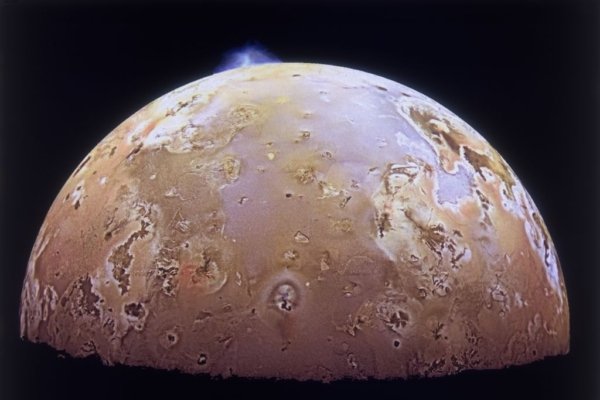NASA’s Juno mission has unraveled a 44-year mystery surrounding Jupiter’s moon Io, revealing the origin of the ongoing volcanic activity on Io.
On December 12, a paper detailing the source of volcanic activity on Io was published in the journal “Nature.”
Io, Jupiter’s closest moon, roughly the size of our Moon, is estimated to have around 400 volcanoes, making it the most volcanically active body in the solar system. It seems to continuously erupt plumes and lava, covering its surface and giving it a unique appearance.
Utilizing data collected by NASA’s Juno mission, animations were presented showcasing Io’s volcanic plumes, surface lava views, and the satellite’s internal structure.
The Juno mission’s spacecraft has been orbiting Jupiter and its moons since July 2016, conducting observations. In December 2023 and February this year, Juno made incredible close flybys of Io.
Scientists from NASA’s Juno mission found that each volcano on Io may be powered by its own roiling hot magma chamber rather than being driven by a global magma ocean, a longstanding assumption among astronomers.
“This discovery unravels a 44-year-old mystery about the underground origin of Io’s most distinctive geological feature,” NASA stated.
This finding could potentially alter astronomers’ understanding of satellite bodies in the solar system primarily characterized by subsurface oceans, such as Jupiter’s moon Europa and planets outside our solar system.
CNN reported that Scott Bolton, co-author of the research report and Juno’s principal investigator, described Io as one of the most fascinating bodies in the solar system.
Although Italian astronomer Galileo discovered Io on January 8, 1610, Bolton highlighted that it was not until Voyager 1 flew past Jupiter and its moons in 1979 that the volcanic activity on Io’s surface was revealed through images resembling a pepperoni pizza.
That year, Linda Morabito, an imaging scientist at NASA’s Jet Propulsion Laboratory, discovered volcanic plumes on Io from images captured by Voyager 1.
This discovery posed a decades-long puzzle as astronomers sought to understand the source of Io’s ongoing volcanic activity.
Bolton noted, “Since Morabito’s discovery, planetary scientists have been curious about how volcanoes are energized by subsurface magma. Is there a shallow, churning magma ocean fueling the volcanoes, or is their source more localized? We know that Juno’s two very close flybys can provide insight into how this tortured moon works.”
Jupiter’s immense forces exert tidal squeezing on Io while it orbits Jupiter, heating Io up due to tidal flexing, where tidal friction generates internal heat.
Bolton explained, “This is what’s happening inside Io. The squeezing generates heat, and it becomes so hot that the interior of Io is actually melting and bursting. Eruptions are constant, like a never-ending downpour. It’s always erupting everywhere.”
Heidi Becker, a planetary scientist at NASA’s Jet Propulsion Laboratory, stated that the mission also captured a series of images showcasing Io’s “primitive fantasy land surfaces.” These unprecedented images focus on Io’s distinct features, including islands on massive lava lakes like Loki Patera, likened by astronomers to a lava sea on Io’s surface.

